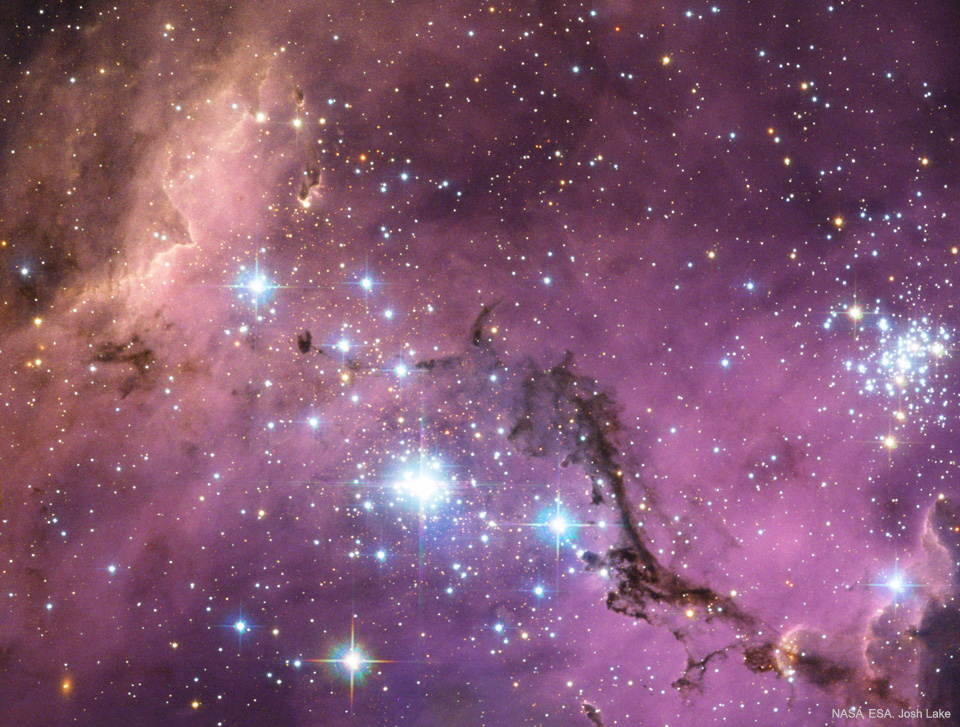(Image Credit: NASA, ESA, Josh Lake)
Located at some 200,000 light years from Earth is the Large Magellanic Cloud (LMC), the Milky Way’s satellite galaxy. In here we can find the N11, the brightest emission nebula of the LMC. As we explore the N11, we can find this emission nebula that looks like cotton candy: the NGC 1763, where there are numerous massive stars and mountains of dust. As you can see in this image, compact globules of dark dust house numerous young stars.
The cosmos will always be a magnificent spectacle. Words alone may not be enough to describe its complexity and beauty. It is amazing how much of the universe is still yet to be seen and discovered.
The image above is taken by the Hubble Space Telescope and is reprocessed artistically by Josh Lake, an amateur who won Hubble’s Hidden Treasures competition — a competition where artists reprocess photos that have been taken by the Hubble and have never been seen by the public.
The N11 is only the second largest emission nebula in the LMC, next to the Tarantula Nebula.
Fun Fact:
A new study of variable stars in the LMC with Hubble has helped to recalibrate the distance scale of the observable universe, but resulted in a slightly different scale than found using the pervasive cosmic microwave background.
By Franzified




No comments:
Post a Comment